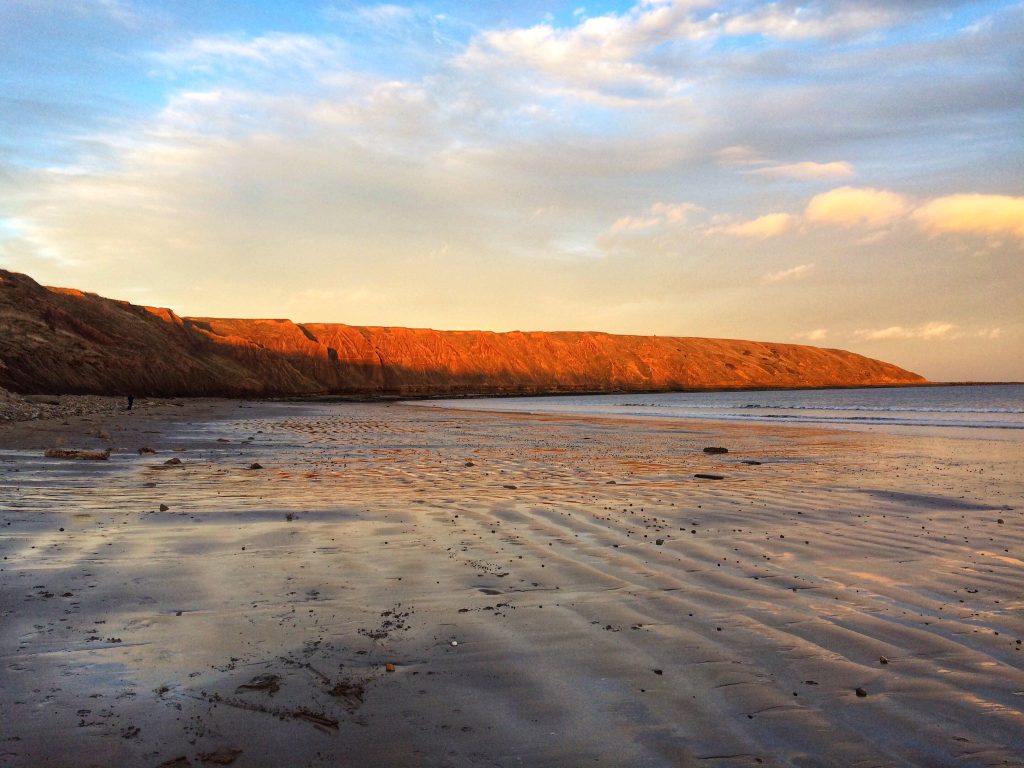 Filey Brigg is a long narrow peninsula situated about a mile north of Filey, North Yorkshire.
Filey Brigg is a long narrow peninsula situated about a mile north of Filey, North Yorkshire.
Its steep cliffs are 15 metres high and consist of a variety of material, from pure sandstone to pure limestone.
The landward end of the peninsula of Filey Brigg is known as Carr Naze, whilst the long neck of rock at the seaward end is called the Brigg.
The first record of Filey Brigg’s ancient history was made by a local antiquarian, Dr Cortis (MD), who excavated a Roman signal station in 1857. In November that year he delivered a lecture to Filey’s antiquarians in which he enumerated a number of findings made by “a painter belonging to Filey, named Wilson,” who had found large quantities of Roman pottery, bones and charred wood in the area of Carr Naze on the northern side of Filey Bay.
The existence of the entire structure of Filey Bay and the Brigg is caused by the fact that the rock on the south side of the Brigg slid down, causing the overlying clay to lie either at or below the level of the sea, which eroded it to form Filey Bay. The hard rock on the northern side juts out to form the Brigg. The structure still erodes and large rock slips caused by constant rapid erosion of the clay cliffs of Carr Naze have been witnessed. The last one occurred in 1869 and took away several hundred metres of the Naze.
The rocks of Filey Brigg as well as the intertidal zone attract numerous species of birds, such as oystercatchers, redshanks and purple sandpipers, which visit the shoreline in nationally significant numbers during the winter.
